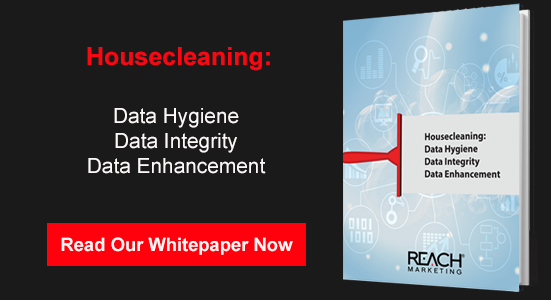What’s your biggest data dilemma? Are you overwhelmed by too much data, or do you feel you don’t have enough of it to gain useful insights into your audience? For most companies, the issue isn’t a matter of too much or too little, but data quality itself. Take these steps to improving quality, and you’ll optimize your data’s value as a revenue driver no matter the size of your database.
Tear Down the Walls
One of the most persistent challenges organizations face when dealing with information is siloing of data. As data streams in from numerous sources, it doesn’t always flow into the same centralized repository; sometimes it isn’t even in the same format, making data normalization another concern for database managers. If you’re working with separate software systems for customer service calls, prospect data, business mailing lists, billing, and shipping, you can’t see how these disparate data-sets interact.
Relational databases come by their name honestly. They reveal not only data itself, but also how data points relate to one another, which is key to understanding the forces that drive everything from lead generation to customer retention. When you see how your drip nurture program ties directly to revenue or what your best customers have in common with one another, you’re able to anticipate what your marketing moves should be even before you encounter the leads who will become next year’s customers.
Trying to derive meaningful insights from scattered data is like trying to win at chess when you only see a third of the board.
Enhance Your Data
Science fiction TV shows sometimes feature starship captains enhancing a blurry image far beyond what the initial picture showed. While the technology to tell new life-forms from pixels isn’t available just yet, the ability to enhance marketing data is here today. Data enhancement services can include data identification, normalization, and standardization; data hygiene and merge/purge processes; verification with a master database; and data enrichment.
After data hygiene cleanses files of inaccurate or invalid information, data enrichment adds new information to make prospect and customer files more complete. If, for example, you have a lead’s name, job title, and email address, data enhancement can also give you important demographic and firmographic data to append to this prospect’s files.
Keeping up with Data
Data is only pure in theory; in actual databases, it’s prone to duplicate records, outdated information, and minor errors that can delay your message from getting to its recipients. Because data decays at a rate of about 3 percent per month, on average, it’s vital to perform data enhancement operations regularly. Some routine database management tasks are handled with marketing automation tools; others may take some interaction with a database manager. Your marketing database management team can set the system to flag records that are ambiguous to automated processes so they can be handled on a case-by-case basis.
Another way to keep records up to date is with data validation controls you and your data enhancement team integrate into online forms. When your forms require certain entry types, you cut down on the number of invalid responses prospects give. For example, you might require that a ZIP code field will allow only numbers or that an email address needs to be a valid business address.
Your data’s worth is only as great as its quality and accuracy. With a database management strategy that keeps quality high, you ensure your data gives you the best value.
© Reach Marketing LLC 2016 All Rights Reserved.







